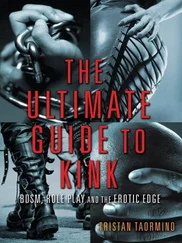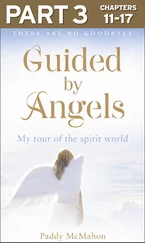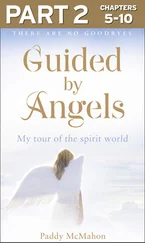During the 1860s and 1870s, when the old Napoleonic and local ordinances were being revised, German doctors and jurists began to grapple with the physiological and social issues of “man-to-man love.” The questions they raised were remarkably prescient and crucial to the overall development of German sexology and organized gay life in Berlin.
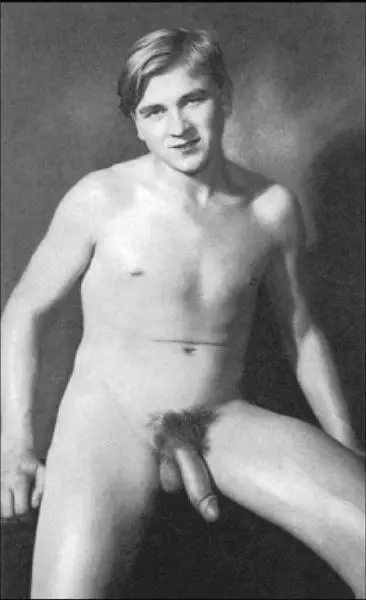
Photograph from Die Insel , 1931
First, the medical and psychological inquires: Was homosexual lust an inborn or inherited condition? Were there “constitutional” portents of the pederast character? (Many physicians believed then that an unusually tapered penis or an anus with a funnel-shaped cavity were clear biological indications of the uranic personality.) Did an “unhealthy” family dynamic arouse male-bonding and a physical rejection of female sexuality? Could a lifetime of same-sex attraction be acquired through brief exposure to an all-male environment, say, during camping or military school?
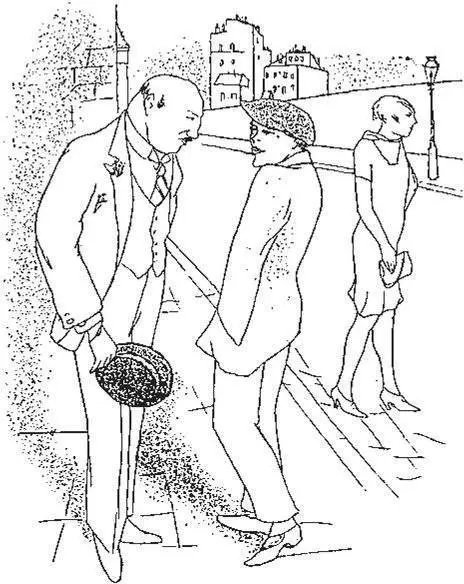
Christian Schad, On the Corner , 1929
Then the legal issues: Under which circumstances should sodomy be considered a criminal offense? Only when it involved children? Could homosexual desire be reversed through medication, behavioral reconditioning, hypnotic suggestion, or penal threats? And if male seduction was a premeditated transgression—and not the product of biological orientation—what punishments were appropriate and effective?
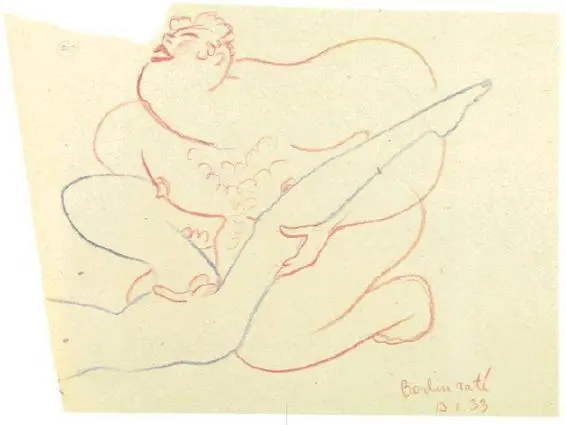
Sergei Eisenstein, Spoiled Berlin , 1933
In 1871, the judicial aspect of homosexuality was finally resolved in the new Federal Criminal Code. Germany had consolidated into a single Wilhelmian state, the Second Reich, and immediately formalized its statutes and regulations according to the dictates of the Kaiser’s Assembly.
Paragraph 175 covered homosexual relationships: “paracoital” activities between males subjected them or the “habitual seducer” to imprisonment and fines. (Female-to-female sex was utterly ignored in the Code.) Unfortunately for the puritanical German magistrates, the precise meaning of “paracoital” was left undefined. In the Weimar era, it was understood to be just anal penetration and “intercrucal intercourse” (leg and thigh humping). Street-smart Nazi legislators immediately added oral sex, mutual masturbation, and other forms of gay sexual contact, including flirtatious glances, to the Paragraph in 1935. They also considerably augmented the punishments for second-time offenders.
GERMAN GAY MAGAZINES
Blätter für Menschenrecht —(“Journal for Human Rights”), “Official Paper of the League of Human Rights, ‘the Organization of 12,000.’” Motto: “For Truth and Justice.” Weekly edited by Friedrich Radszuweit, head of the “German Friendship Union.” Serious publication with united goals for gay, lesbians, and transvestites. Alternated between Third-Sex and Libertarian philosophies. [1922-1929]
Der III Geschlecht, Die Transvestiten —(“The Third Sex, the Transvestites”), a periodical for “ordinary” transvestites. Lots of fashion tips. Published by Radszuweit. [1929]
Die Ehelosen —(“The Unmarried”), unidentified gay monthly. [1927]
Der Eigene —(“The Exceptional”), “the Journal for Male Culture,” later “the Newspaper of Friendship and Freedom.” “A Book for Art and Manly Culture.” First homosexual periodical in the world. Small intellectual, but highly influential, periodical edited by Adolf Brand and Konrad Linke. It contained color drawings, philosophical essays, photos of nude boys, adventure stories, and manifestos. Circulation 3,000 to 6,000. Affiliated with the “Society of the Eigene.” [Intermittently published from 1899 to 1929.]
Ernst —An artistic journal devoted to boy-love. Poetry, short stories, and uncommonly hardcore drawings. Probably influenced in style by Die Schönheit . [circa 1919]
Eros —“Magazine for Friendship and Freedom, Love and Life-Art.” A gay pictorial edited by Brand. Militant Homosexualist competitor to Der Insel —[1930-1932] Extrapost des Eigenen —A continuation of Brand’s Der Eigene . [1929-1931] Die Fanfare —“The Official Organ of the Cultural Cartel.” Motto: “For a Liberated Humanity.” A stylish one-man effort opposed to the “League of Human Rights.” Gay monthly edited by Curt Neuburger. [1924-1926]
Der Freund —(“The Friend”) A decoy gay publication of Der Freundschaft during a brief period of censorship. [1924-1925]
Die Freundschaft —(“The Friendship”) Motto: “For the Liberation of Differently-Inclined Men and Women.” First Weimar paper with nude photographs, openly gay personals, and advertising. Between 1923-1926, it functioned as a weekly info sheet for Magnus Hirschfeld’s Scientific-Humanitarian Committee. Edited by Karl Schultz. Later a popular monthly. [1919-1933]
Die Freundschaftblatt —(“The Friendship Paper”) Libertarian journal for the umbrella gay organization, “German Friendship Society.” Published by Radszuweit. Short-lived, sister publication in Chicago was titled Friendship and Freedom . [1920-1933]
Freundschaft und Freiheit —(“Friendship and Freedom”) “A Paper for Male Rights Against Bourgeois Morality, Clerical Authority, and Female Rule.” Homosexualist monthly edited by Brand. Later incorporated into Der Freundschaft . [1921-1922]
Der Führer —(“The Leader”) Another Homosexualist monthly. [1923]
Hellabote —(“Greek Messenger”) “For a Liberated Humanity Against Injustice and Ignorance.” Liberal homosexual monthly edited by Hans Kahnert, a former writer from Der Freundschaft . [1923-1925]
Der Insel —(“The Island”) Libertarian monthly published by Radszuweit. Featured provocative photos, gay fiction and news, and ads for gay books and “massage services,” personals, and Dielen . Largest queer periodical with a print run of 150,000. Originally “Island of the Lonely” section from the Blätter für Menschenrecht . Brother zine to the lesbian Die Freundin . [1925-1932]
Der Kreise —(“The Circle”) Swiss gay intellectual journal, which outlasted the Weimar and Nazi eras. Good source for exile queer literature and postwar ideology. [First year 1932]
Der Merkur —(“The Mercury”) Literary gay monthly. [1922]
Mitteilungen des WhK —(“Bulletin of the S-H C”) News periodical of Hirschfeld’s Scientific-Humanitarian Committee. [1926-1933]
Neue Freundschaft —(“New Friendship”) “Weekly for Friendship, Pictures and Enlightenment.” “Organ of the German Friendship League.” Edited by Max H. Danielsen, a former editor of Der Freundschaft . [1928]
Phoebus-Bilderschau —Gay pictorial magazine from the Phoebus Verlag. Edited by Kurt Eitelbuss. [1927-1929]
Читать дальше






